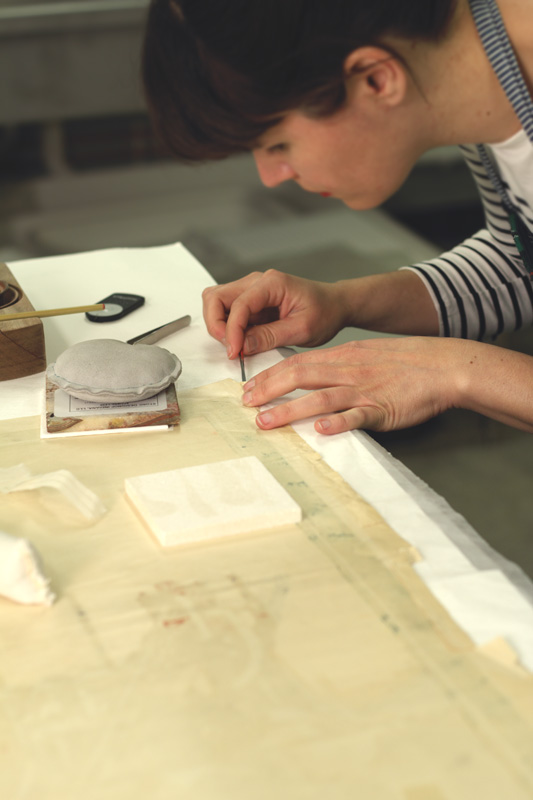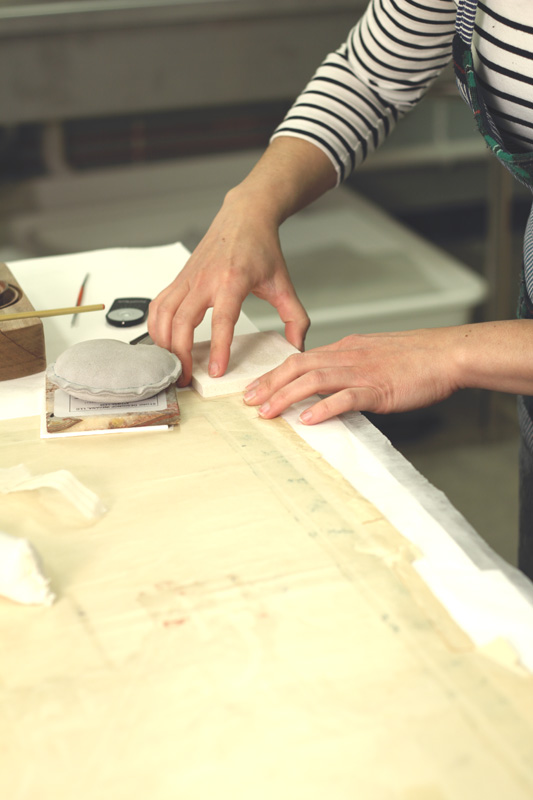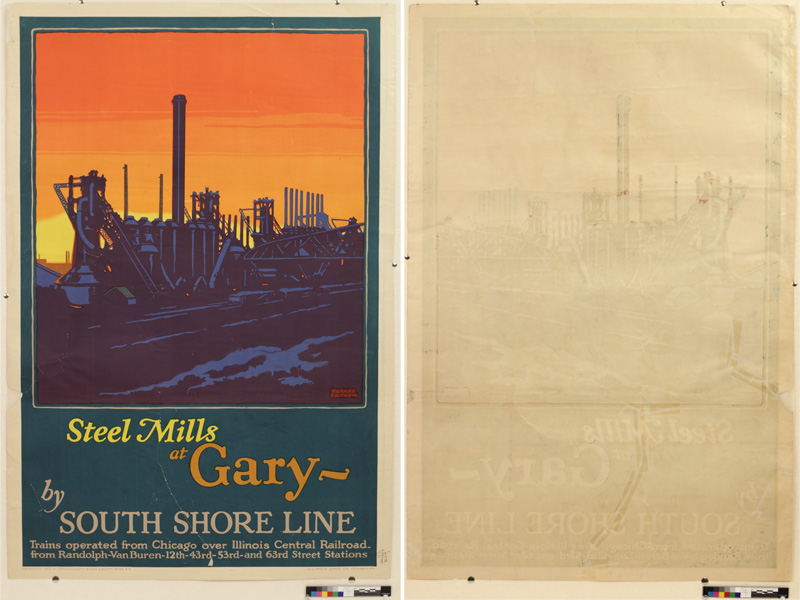During a recent treatment, I was reminded by a librarian that it’s amusing to them that I describe conservation treatment work as making something “happy” again. To be perfectly honest, that is exactly how I see it. When I see something that is torn, stained, and taped within an inch of its life, it looks miserable to me. I see the potential and I can’t wait to get stuck in.
A great example of this is a recently completed treatment on one of our beautiful 1920s South Shore Line broadsides. “Steel Mills at Gary by South Shore Line,” (C. 1925) had come to my attention because it will be featured in an upcoming exhibit here at the library this summer. We have also been digitizing these broadsides and, in its current condition, it would have been very unsafe to do so.
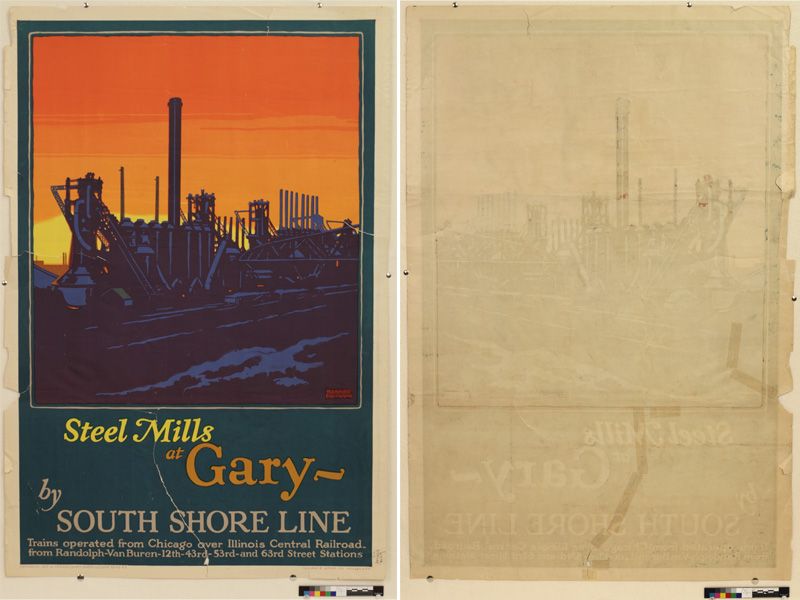 With a large disfiguring tear down the front and several edge tears, creases and losses, this broadside just looked uncomfortable. As you can see on the back, an enterprising former employee had attempted to mend this posted with one of a conservator’s most-dreaded nemeses: tape. This mending job had also not quite lined up the tear carefully enough, causing the main disfiguring problem: bumpiness in the overall surface (or as we call it in fancy conservation terms, cockling and planar distortion). The edges definitely held promise because I could see that much of what appeared “lost” at the front had actually just been torn and folded over onto itself. With careful work, it could be made happy again!
With a large disfiguring tear down the front and several edge tears, creases and losses, this broadside just looked uncomfortable. As you can see on the back, an enterprising former employee had attempted to mend this posted with one of a conservator’s most-dreaded nemeses: tape. This mending job had also not quite lined up the tear carefully enough, causing the main disfiguring problem: bumpiness in the overall surface (or as we call it in fancy conservation terms, cockling and planar distortion). The edges definitely held promise because I could see that much of what appeared “lost” at the front had actually just been torn and folded over onto itself. With careful work, it could be made happy again!
The plan of attack was simple:
- Surface clean the front and back carefully
- Remove the tape from the back, ensuring all adhesive residue is removed
- Properly align and mend tears
- Re-encapsulate
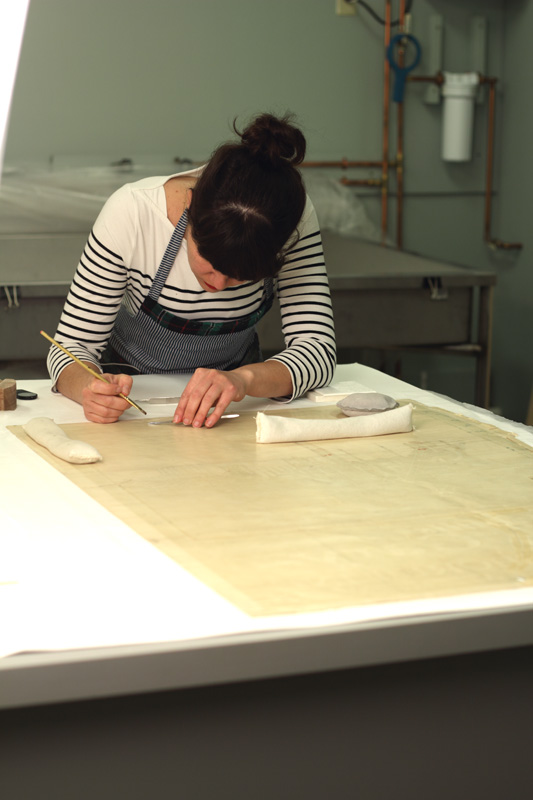
Self-mending flap tears, where the paper has torn in a way that overlaps itself and can be mended to itself, sometimes without Japanese paper needed.
After the tape and adhesive residue were painstakingly removed, I was able to realign the tears and mend it all back together using wheat starch paste and Japanese paper. Here are the results:
This broadside looks much happier and can now be safely exhibited, digitized, and accessed by our patrons. A very satisfying treatment, indeed!
This broadside is part of the Rare Books and Manuscripts Broadsides Collection at the Indiana State Library.
This blog post was written by Rebecca Shindel, Conservator, Indiana State Library.
Please note that colors presented on computer screens are not precisely accurate, and may look slightly different from one screen to another.


